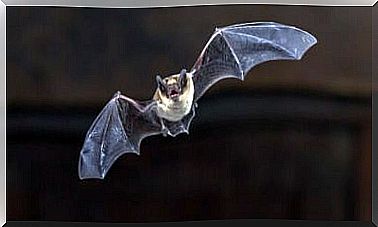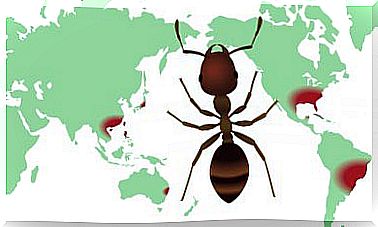The Life Cycle In Amphibians: Keys To Understanding It
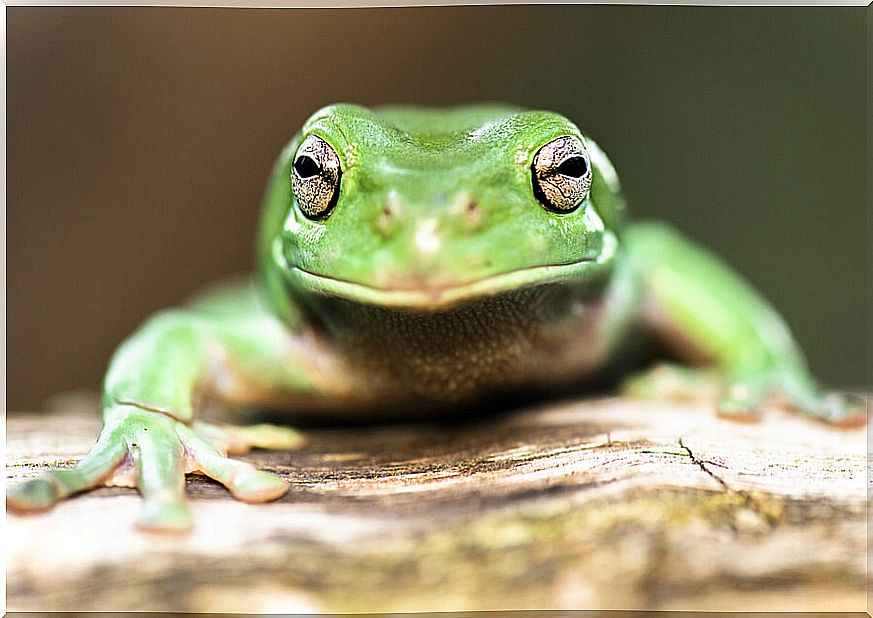
All species on the planet have our own life cycle, which refers to the stages or changes that an organism goes through from birth to death. Thus, the life cycle repeats and concatenates each new generation.
It is common to observe that in the early stages of the life of many organisms the offspring retain the morphology of their parents. They progressively go through various phases of growth until they are fully developed.
In contrast, other animals such as beetles, frogs, and butterflies go through a process called metamorphosis. Metamorphosis is a word that derives from the Greek and means transformation or change of form.
Therefore, in animals that undergo metamorphosis, the young do not resemble their parents. In the process of metamorphosis, two hormones, prolactin and thyroxine, control the transformation from egg to larva to adult. If you want to know more about this fascinating process in amphibians, keep reading.
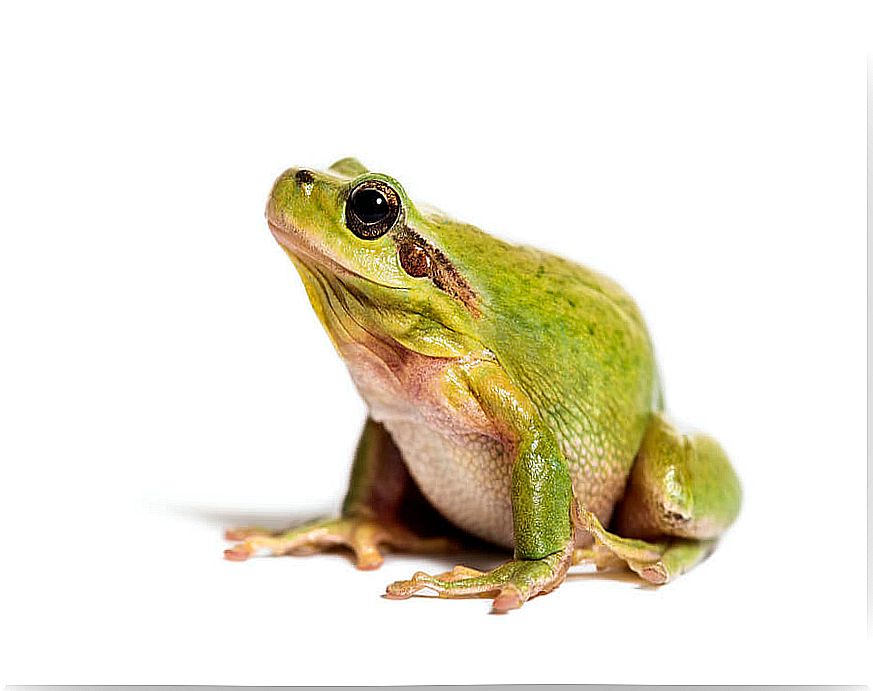
Reproduction of amphibians
In general, the breeding season for frogs and toads occurs during the spring in temperate climates. In tropical climates it occurs during the rainy season. When the time comes, male frogs make loud sounds to attract mates. Males make these calls by filling a vocal sac with air and moving it back and forth, creating a screeching sound.
When mating, the male frog clings to the female’s back, looping his front legs around her waist or neck. This hug is known as an amplexus : its purpose is to ensure that the male is in the optimal position to fertilize the female’s eggs as she lays them. Depending on the species, the amplexus can last from a few minutes to whole days.
Fertilization: the beginning of the frog life cycle
Fertilization of the eggs occurs externally. Once the eggs are released into the water by the female, the male sheds his sperm as spawning occurs. The egg and sperm fuse to form the fertilized egg or zygote. It is a unique cell that is destined to become a new being.
The fertilized egg: the more the merrier
In many species of amphibians, the adults let the eggs develop without much care after fertilization. However, other species show various types of parental care. Some amphibians have very unusual ways of caring for their young.
The amphibious s tend to put a lot of eggs because there are many threats that hinder the survival of the larvae . The number of eggs a frog lays at a time varies by species, but more than 2,000 at a time is not uncommon.
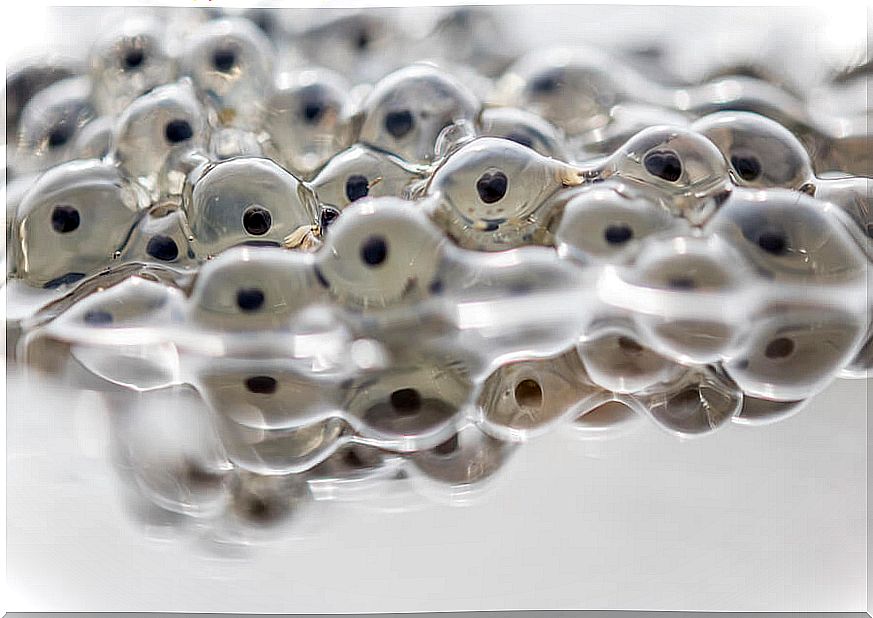
The tadpole or larva
Usually 6-21 days after being fertilized, the egg hatches and a small tadpole is released . The tadpole takes the remains of its egg as its first food. These larvae generally attach themselves to floating grasses, and after a week they begin to swim and feed on algae. At this stage they are considered herbivores.
In their larval stage, amphibians have external or internalized gills that allow them to breathe through gas exchange with water. The water enters through the mouth and leaves through the gill slits, where gas exchange takes place thanks to the capillary vessels associated with the filaments that make up the gills.
Tadpole with legs
After about 6 to 9 weeks, little legs begin to sprout from the body of the little frog or toad. The shape of the head changes and the body lengthens. At this time the tadpoles can include larger items in their diet, such as dead insects and even plants.
Small bumps can be noticed that will give rise to the forelimbs. After about 9 weeks , the tadpole looks more like a small frog with a very long tail. It is now on its way to being almost fully developed! As it continues to grow, the front limbs grow and the tail shrinks.
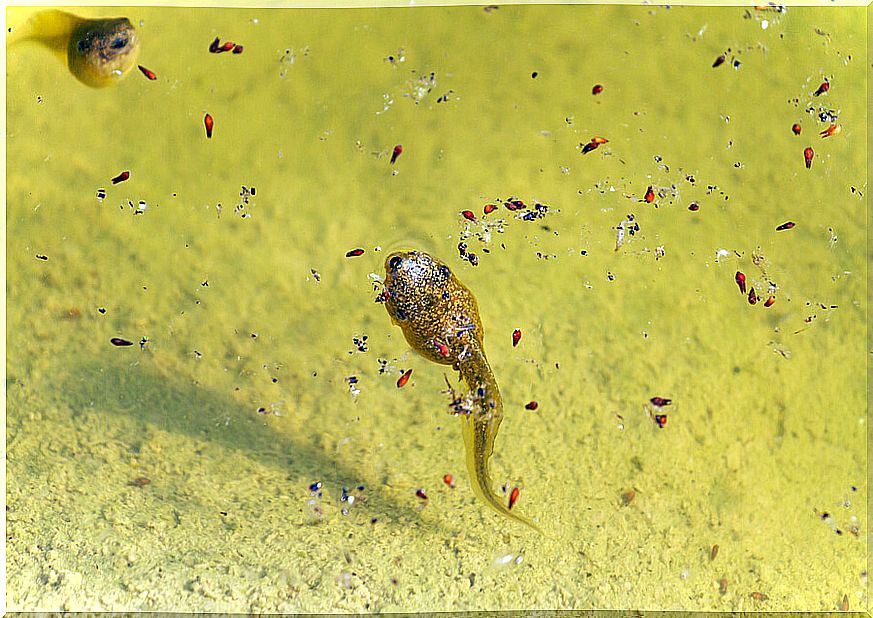
The adult completes the life cycle: one puff at a time
By approximately 12 weeks of age, the gills and tail of the tadpole have been fully absorbed into the body. The key change to venturing to dry land is losing your gills and developing lungs.
During their adulthood, frogs have two lungs and lack a diaphragm. For this reason, they must make convulsive movements with the throat to generate the entry and exit of air. It is also important to note that amphibians show skin respiration.
The adult frog grows and after a time of terrestrial development it reproduces, beginning the life cycle again. This exciting process is complex and delicate, and draws attention to the radical change between larvae and adults.

